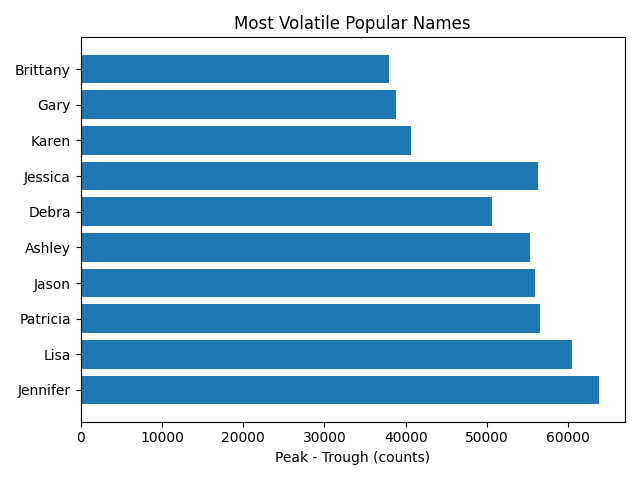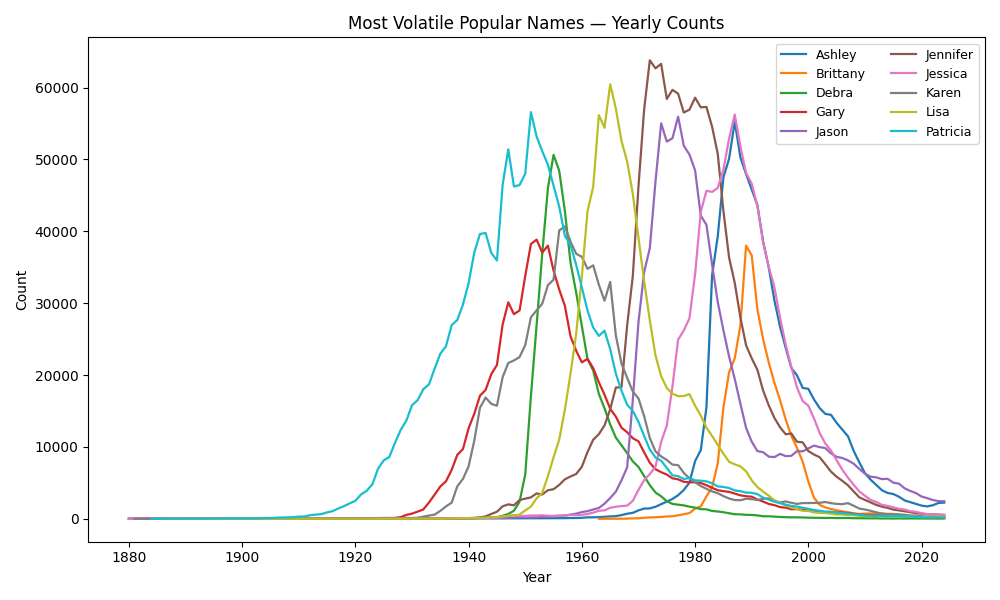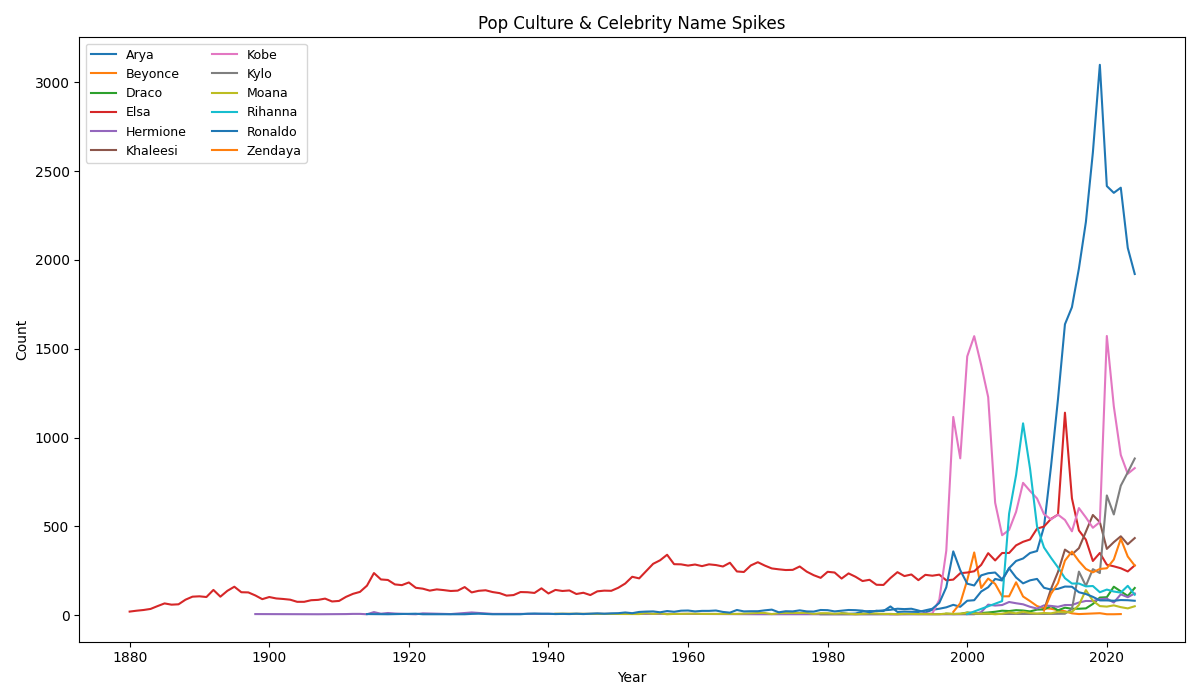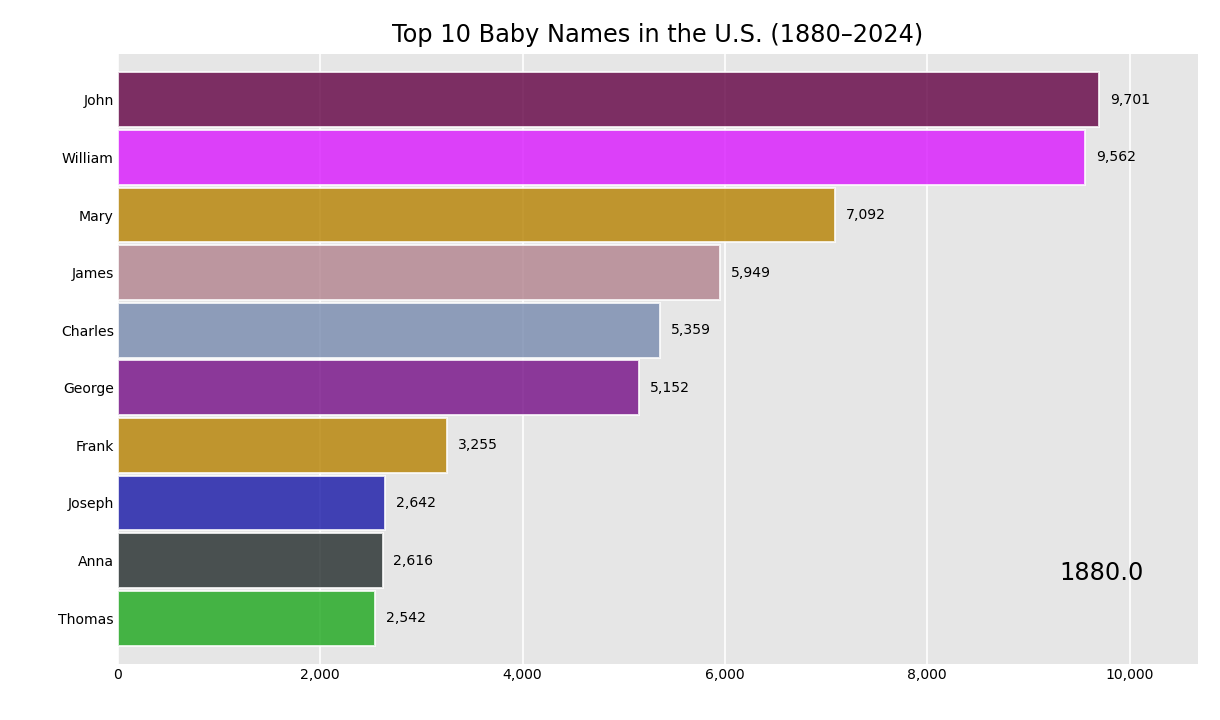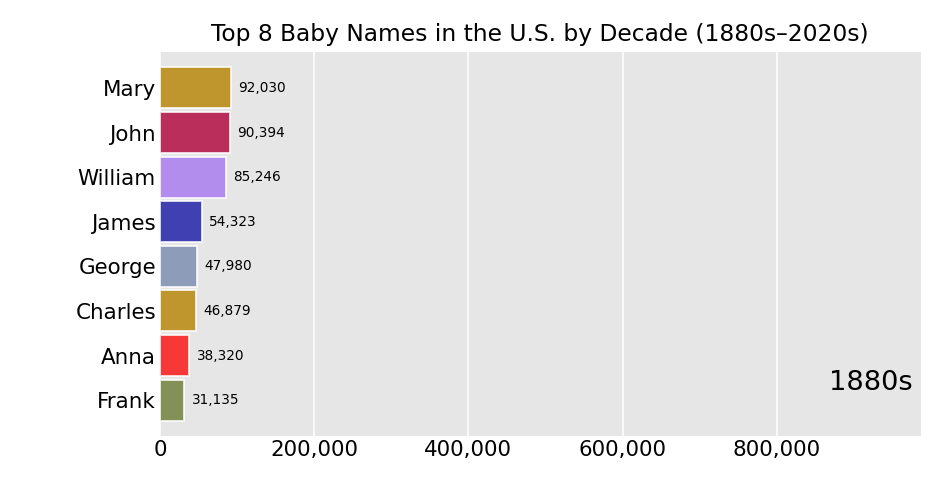The Name Diversity Explosion
One of the most dramatic changes in American naming: the explosion of diversity over time.
The Name Diversity Revolution
In 1880, parents chose from about 1,200 unique names. By 2024, that number exploded to over 32,000, a 2,600% increase.
But here's what's really interesting. It's not just about having more names. The way names are distributed has changed completely. In the early 1900s, the top 10 girls' names captured a huge share of all births. Today, that share has plummeted.
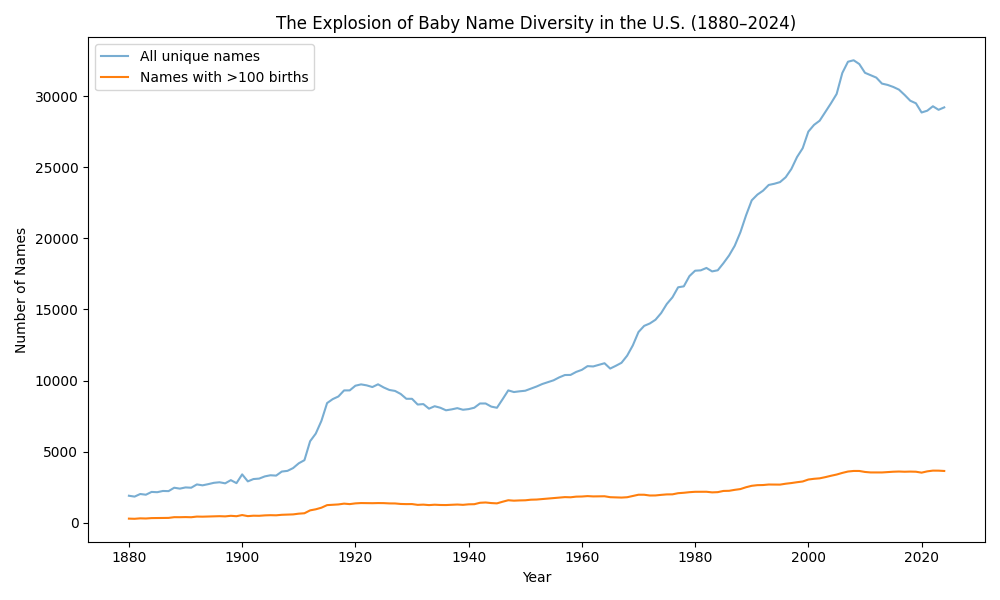
The dramatic increase in unique names vs common names over 144 years
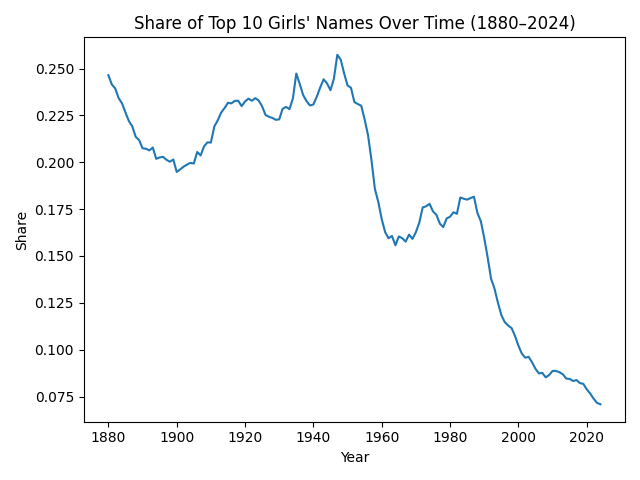
How the dominance of top 10 girls' names has declined over time
The End of Name Dominance
The top 10 girls' names used to dominate American births. Not anymore.
In the early 1900s, the top 10 girls' names captured about 25% of all female births. Today, that share has dropped to less than 7.5%. Parents are spreading their choices across thousands of different names instead of clustering around a few popular ones.
This isn't just about having more options. It's about fundamentally different attitudes toward individuality and uniqueness.
